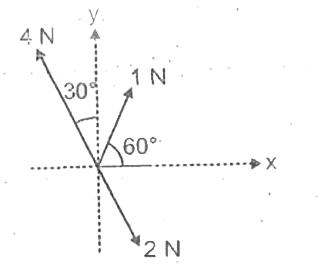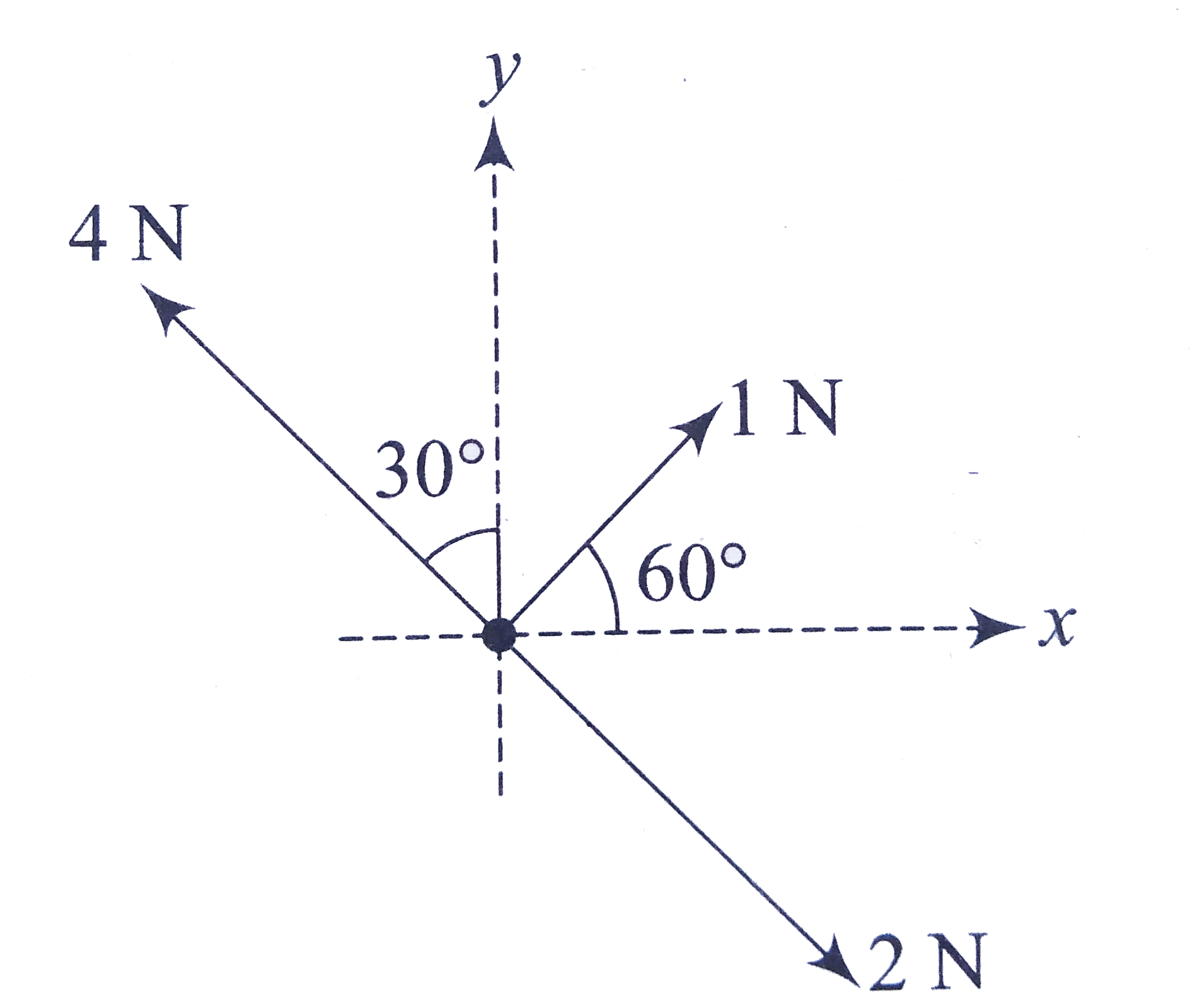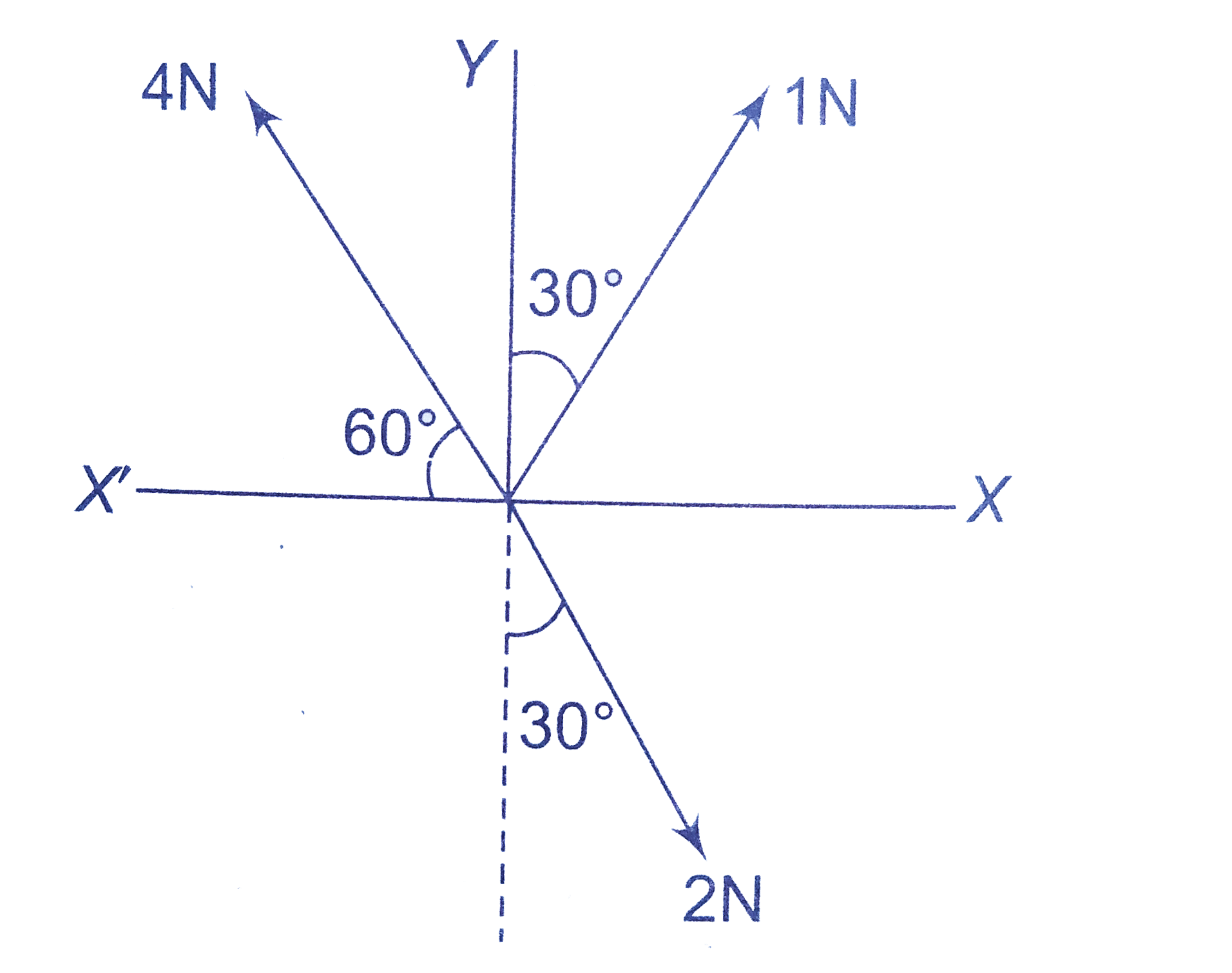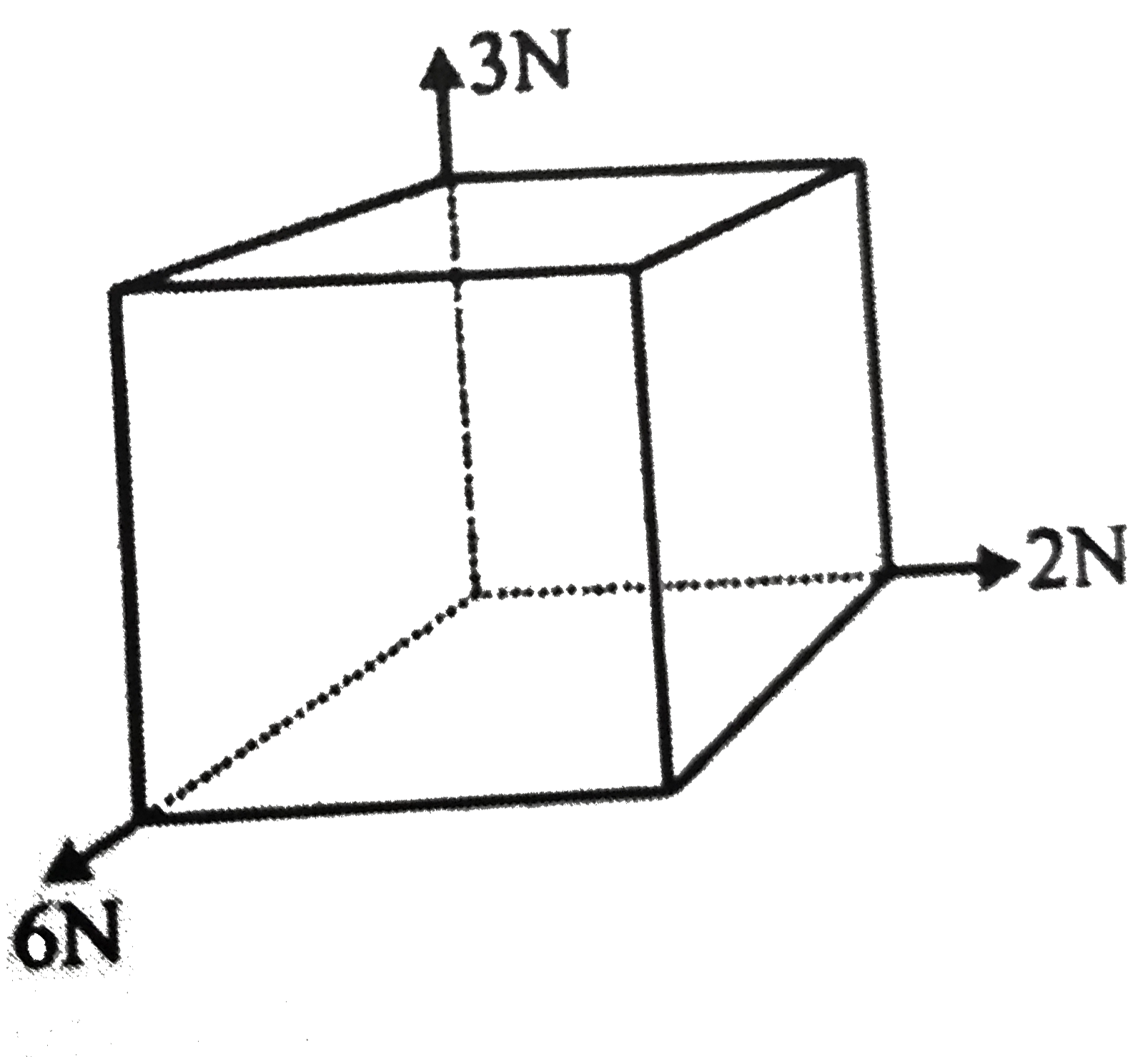Three forces of 4 N, 1N and 2 N acting on a body are as shown in the figure. We want to have the resultant force only along the y-direction. What should be the magnitude of the minimum additional force required for it ?

0.5 N
1.5 N
The correct Answer is:A

We should have the resultant force only in the Y direction. For this we first resolve the three forces along X and Y axis.
It is acting in the -ve direction.
The resultant force acting along the X-axis should be zero. For this we must apply a force F in the positive X direction and the magnitude of this force
Topper's Solved these Questions
- BOOK - MARVEL PUBLICATIONCHAPTER - VECTORSEXERCISE - MULTIPLE CHOICE QUESTIONS (STANDARD LEVEL)84videos
VECTORS
- BOOK - MARVEL PUBLICATIONCHAPTER - VECTORSEXERCISE - TEST YOUR GRASP10videos
VECTORS
- BOOK - MARVEL PUBLICATIONCHAPTER - REFRACTION OF LIGHT EXERCISE - Test Your Grasp10videos
REFRACTION OF LIGHT
Similar Questions
Three froces acting on a body are shown in the figure. To have the resultant force only along the y-direction, the magnitude of the minimum additional force needed is
 View Solution
View SolutionThree forces acting on a body are shown in figure. To have the resultant force only along the y-directon, the magnitude of the minimum additional force needed si
 View Solution
View Solution
Knowledge Check
- Question 1 - Select One
Three forces are acting on a particle as shown in the figure. To have the resultant force only along the Y-direction, the magnitude of the minimum additional force needed is
 A0.5NB1.5NC√34ND√3N
A0.5NB1.5NC√34ND√3N - Question 2 - Select One
Three forces are acting on a particle as shown in the figure. To have the resultant force only along the Y-direction, the magnitude of the maximum additional force needed is
 A0.866NB1.732NC0.5ND4N
A0.866NB1.732NC0.5ND4N
Three forces acting on a body are shown in figure. To have the resultant force only along the y-directon, the magnitude of the minimum additional force needed si
 View Solution
View SolutionFour forces are acting on a body as shown in figure. The magnitude of resultant of the forces is
View SolutionThree forces of magnitudes 2N, 3N and 6N act at corners of a cube along three sides as shown in figure. Find the resultant of these forces in N.
 View Solution
View SolutionThree forces of magnitudes 2N, 3N and 6N act at corners of a cube along three sides as shown in figure. Find the resultant of these forces in N.
 View Solution
View SolutionTwo forces 12 N and 16 N are acting upon a body, what can be the maximum and minimum resultant force on the body ?
View SolutionTwo constant forces 4 N and 5 N act on a body in opposite directions .Find the resultant force on the body
View Solution

